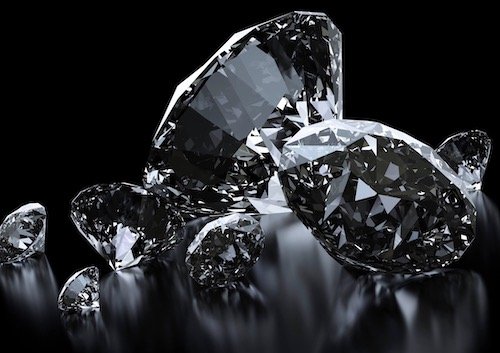It was said to be very big. Exactly how big, we will never know. What we have learned is that Julius Caesar paid dearly for it. In 64 BC, the statesman became the proud owner of a single black pearl, costing him 6 million sesterces (Roman coins) or something just over US $1.5 billion. Caesar presented this valuable gem to his favourite mistress, Servilia Caepionis, a woman from an esteemed Roman family. Many believed he was more interested in her intellect rather than her looks. Either way, Caesar remained enamoured with her until his assassination in 44 BC. He is reported to have been a connoisseur of pearls and must have known this particular black beauty was one-of-a-kind. For years, historians have been left baffled – how could he afford such a lavish gift?
Natural black pearls are rare. They are unique to the tropical waters around the islands of French Polynesia. Local turquoise lagoons are home to the black-lip oyster (Pinctada margaritifera), the mollusk that produces the treasured black pearl. Unlike regular shells, this oyster’s interior has a thick black band. If a pearl develops close to this area, it will absorb its dark pigment. Once harvested, these valuable pearls are traded and sold on the island of Tahiti. Hence the name Tahitian pearls. This exotic gem’s seductive range of black colouring adds to its desirability. Rich undertones of burgundy, amber, phthalo green and Aegean blue add a beguiling lustre to these deepwater jewels. This palette of colours help create both warm and cool shades of black. Seeing a strand of natural black pearls in person makes one appreciate how complex the colour can be. It also explains why they are so expensive.
The colour black is mysterious. It adds intrigue. Humans are fascinated when confronted with an object not typically coloured black. Take, for example, black diamonds. Clear diamonds are what we expect, whereas black diamonds pique our curiosity. Naturally grown black diamonds (Carbonado) come infused with graphite and amorphous carbon. They too, are rare, typically 1 to 3.5 billion years old. Because they are out of the ordinary, we are attracted to their uniqueness, much like Tahitian pearls. Black makes them even more enigmatic and, for some, more desirable than their colourless counterparts. Is there an underlying magnetism attached to the colour? Or is it because it evokes a feeling of calmness? Both seem to touch something deep within us.
Image: Gentleman’s Gazette
Black and sophistication go hand-in-hand. It has long been a defining colour within the fashion industry. Formal events, with their black dresses and tuxedoes, forego colourful garb for understated elegance. Yves Saint Laurent once said, “I love black because it affirms, designs and styles.” Most established fashion houses incorporate timeless, black typography into their visual branding – think Channel and Givenchy. What may appear as safe positioning for such a creative industry is a means of reinforcing their authority and stability. Black signals power.
Invariably, definitions of black include its relationship with light. Black occurs when there is a complete absence of light or when no visible light reaches the eye. NASA explains a black hole as “a place in space where gravity pulls so much that even light can not get through.” Whether in small or large amounts, black creates voids of light and with that comes the implication of something hidden, the unknown – a mystery. Is black the complete omission of colour or the result of mixing all colours together? By remaining an enigma, black often leaves us spellbound – the same way Julius Caesar’s black pearl did centuries ago.


